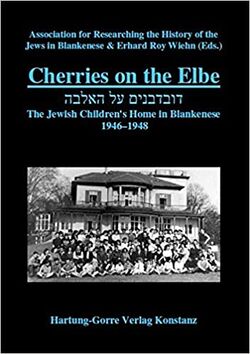Category:Warburg Children's Home (subject)
Warburg Children's Home in Hamburg-Blankenese (see Holocaust Children Studies)
Overview
The sixteen acre Kosterberg estate owned by Max Warburg, the prosperous Hamburg Jewish banker, had been in the family for generations. In October 1941 it was seized by the Nazi regime and turned over to the army for use as officers' quarters and a military hospital. Following the German defeat, the British established a field hospital on the premises. A few months later, Eric Warburg (Max's son) returned to Germany and requested the return of the property. As a member of the Joint Distribution Committee's board of directors (his uncle Felix Warburg was one of the founders of the JDC), Eric decided to turn over the estate to the JDC for use as a shelter for Jewish orphans rescued from the concentration camps. Hundreds of children (most of them liberated in Bergen-Belsen and Theresienstadt) passed through the Warburg home in the three years of its operation.
Book : Cherries on the Elbe (2013)
- Cherries on the Elbe: The Jewish Children's Home in Blankenese, 1946-1948
"George Schwab, Foreword to the English Edition: The impression one obtains reading Cherries on the Elbe is that the Jewish children's home at the handsome Warburg estate in Hamburg-Blankenese overlooking the Elbe River was established in January 1946. Technically that could be correct because the date coincides with the arrival of the first group of children from the displaced person's camp of Bergen-Belsen. However, when I arrived in Hamburg by train from Neustadt/Holstein's displaced persons' camp in late September or early October 1945, I wandered around aimlessly with a small suitcase at Hamburg's largely destroyed but bustling main railroad terminal (Hauptbahnhof) until the German police picked me up and brought me to the estate which was not an abandoned place. On the contrary, it was inhabited by a lively and variegated bunch of Jewish teenagers and some adults. Most had survived the dreadful acts of barbarism that had been inflicted on them in ghettos, concentration and labor camps that were administered by Germans and their collaborators. The idyllic setting of the estate, the ample food, the benevolent and sensitive American Joint Distribution Committee together with the British Jewish Relief Unit administrators and teachers mostly from the Jewish Brigade notwithstanding, no one thought that the estate was the final destination. The burning desire of most survivors was to leave the cursed soil of Germany for the ancient homeland of the Jews. That feeling was reinforced by the administrators and teachers who, in addition to teaching Hebrew, impressed the survivors with the rich history of the Jewish people and the geography of the Holy Land. The Sabbath was welcomed by the lighting of candles and the usual prayer preceding the fine meal at the estate's White House. Following it we gathered as we did most evenings for cultural activities that included the singing of Hebrew songs, mostly composed by Jewish settlers in Palestine, and folk-dancing."--Publisher description.
External links
Pages in category "Warburg Children's Home (subject)"
This category contains only the following page.
Media in category "Warburg Children's Home (subject)"
This category contains only the following file.
- 2013 Ingram.jpg 313 × 500; 32 KB

